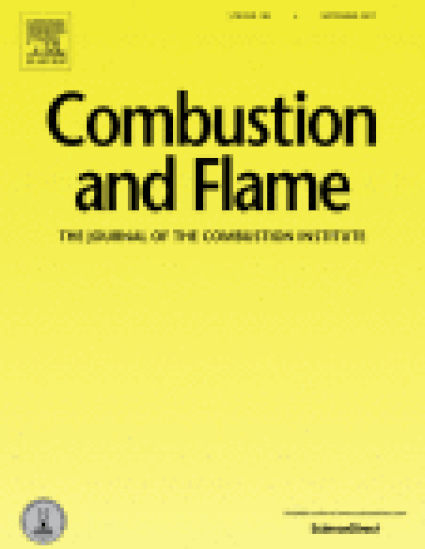
Article
Effect of prompt dissociation of formyl radical on 1,3,5-trioxane and CH2O laminar flame speeds with CO2 dilution at elevated pressure
Combustion and Flame
(2017)
Abstract
Many studies of the flame speed of hydrocarbon and oxygenated fuels show that flame speed is very sensitive to formyl radical (HCO) reactions with small species, such as HCO + M = H + CO + M (R1), HCO + O2 = HO2 + CO (R2) and HCO + X = CO + XH (X = H, OH) (R3). Through comparison among experimental measurements and kinetic model predictions, this paper investigates CH2O flame speed sensitivities to the effects of HCO prompt dissociation and CO2 third-body participation in R1. The conditions considered include atmospheric and elevated pressures as well as lean, ultra lean, and rich fuel mixtures using 1,3,5-trioxane as the CH2O precursor. The experimental results provide key validation targets for CH2O and HCO chemistry and the R1 third-body coefficient of CO2 in flames. Five mechanisms, GRI Mech 3.0 (Smith et al., 1999), Li Mech (Li et al., 2007), USC Mech II (Wang et al., 2007), HP Mech (Shen et al., 2015), and Aramco Mech 1.3 (Metcalfe et al., 2013) are compared against the experimental data. Model predictions indicate that the prompt reaction pathway has a significant effect on the flame speed. With an increase in pressure or the addition of CO2, the kinetic between the prompt reaction and R1 slightly reduces the prompt radical dissociation effect. On the other hand, an increase of O2 mole fraction enhances the prompt effect on the flame speed. Comparisons among experiments and model predictions show that the HP Mech with the prompt reactions, USC Mech, and Li Mech have better predictions of the flame speed at lean, ultra-lean, rich, and lean with CO2 conditions than GRI Mech and Aramco Mech. However, the predictions of USC Mech and Li Mech with prompt reactions show increased discrepancy between experiments and predictions. This result indicates that by including a new reaction pathway, an optimized model may fail beyond the validated experimental conditions. On the other hand, an elementary rate-based, non-optimized model like HP Mech can improve the prediction by directly adding the missing prompt reaction pathway.
Keywords
- laminar flame speed,
- formaldehyde,
- CH2O chemistry,
- HCO prompt reaction
Disciplines
Publication Date
June 6, 2017
DOI
https://doi.org/10.1016/j.combustflame.2017.05.005
Citation Information
Hao Zhao, Jiapeng Fu, Francis M. Haas and Yiguang Ju. "Effect of prompt dissociation of formyl radical on 1,3,5-trioxane and CH2O laminar flame speeds with CO2 dilution at elevated pressure" Combustion and Flame Vol. 183 (2017) p. 253 - 260 Available at: http://works.bepress.com/francis-haas/10/
